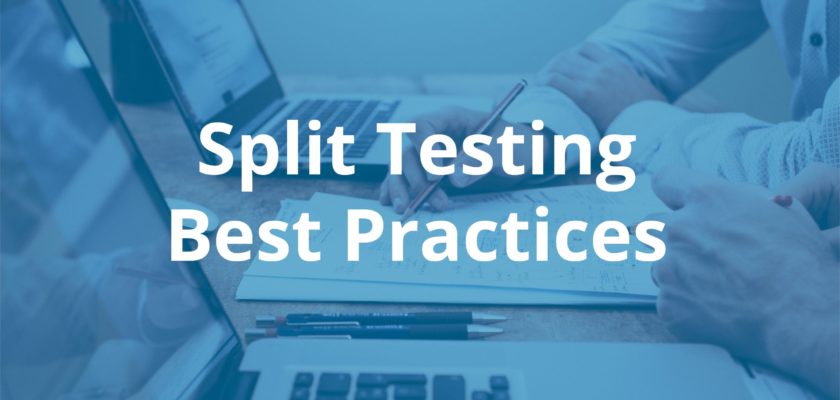The 5 Best Practices for Split Testing

Split testing is a term that is interchangeable for A/B testing or multivariate testing. It’s a method of conducting experiments to improve website conversions (like clicks, purchases, or sign-ups). Incoming traffic will be routed to either the original webpage or an experiment, without the visitor knowing they are part of the experiment. The tester then waits for a statistically significant experiment to emerge, meaning that they have enough data to be 95% confident there is a version that performs better.
Examples of tests include onboarding pages, checkout flows, or CTAs. The data collected will either confirm or deny a hypothesis (like a red CTA increases more purchases than a yellow CTA). If you want to get started on split testing today, check out these 5 best practices first:
5 Best Practices for Split Testing
1. Ensure flow is as simple as possible
Fewer Pages will create less drop off from the start of the funnel to the conversion goal. Your customers will want to get to the CTA as fast as possible, so you should make that easy for them!
2. Make calls to action visible
Make sure your calls to action are the part of your page that stands out the most to encourage your users to click the button.
3. Ensure your tests are symmetrical across different pages
It’s important not to let tests conflict or contradict each other, so ensure your tests are consistent.
4. Let your test run through the whole experiment
One of the biggest errors people make is to end the test too early. Ensure your test is statistically significant with a 95% confidence level. Ending a test early can put your efforts to waste, so always double check the numbers!
5. Have enough website traffic
It’s not good practice to have a small sample size. It’s important to have about 350-400 conversions per variation. Make sure you calculate the sample size ahead of time with tools like this.
Keeping these 5 key practices in mind, you can run successful split tests to improve the conversion rate on your app or website. Check out Taplytics for more help with your split tests, A/B tests, and multivariate tests.

